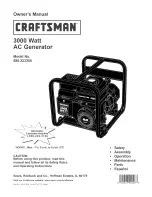
P
OWER
ON
AND
G
AS
S
UPPLY
W
ELDING
O
PERATION
C
HAPTER
5
5-4
5.3 Power ON and Gas Supply
This section explains how to supply power and shield gas.
1.
Supply the input power.
●
Operate the disconnect switch to supply the input power.
⇒
The power LED switch lights up.
18
There should be no large feeding resistance
of wire.
(With the pressurized holder of the wire
feeder held up, hold the tip of welding wire
with a plier, and try pulling it out; if smoothly
pulled out, it is adequate.)
Ensure that the torch cable has no bending at a sharp angle.
If the liner is clogged with dirt or when inched wire has flaw, replace the
liner with a new one.
(In replacing the liner, follow the precautions on the attached manual of
welding torch for appropriate handling.)
In cutting the liner, take care for the followings:
If the liner is too long: feeding resistance increases, resulting in shorter life
of wire feeder.
If the liner is too short: feeding failure occurs.
• Handle the gas cylinder according to the related laws or regulations as well as the
internal standard of the customer.
Note that the gas cylinder contains a high-pressure gas. Wrong operation may cause
gas explosion, resulting in serious physical injury.
• In opening the valve of gas cylinder, keep your face away from the gas discharge port.
If the connection should be loose, high-pressure gas may burst out.
• Keep your hands, fingers, hairs and clothes away from the rotating cooling fan and the
open parts around the cooling fan;
it could result in entanglement with the internal fan.
Check parameter
Countermeasures
Check
GAS CHECK key
Main valve
Input power supply
Power ON
SHUT
OPEN
Flow rate adjustme
knob
Welding power
source
Cover
Power switch
ON
Welding power
source
GAS
















































